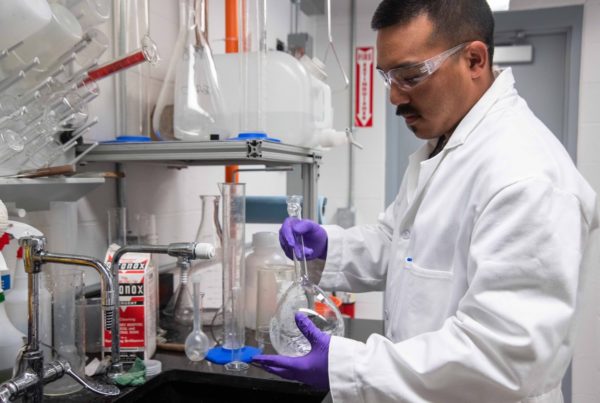We are quite familiar with electrochemistry, in which an electric field is applied (e.g., by connecting a battery) between two, usually metal, electrodes dipping into a solution. At one electrode, electrons entered the solution and reduce dissolved species present; at the other one dissolved species give up their electrons to the electrode and become oxidized.
Semiconductors behave similarly, although the details of phenomena are a little more complicated.
In photoelectrochemistry, the electrons are generated by light shone onto the semiconductor electrode. In order to create electrons (now called photoelectrons) sufficiently energetic to carry out some interesting reductions, the semiconductor with its forbidden gap is needed and the light has to have an energy greater than that of the forbidden gap.
When the electron jumps from the full band into the initially empty band that lies above forbidden gap, it leaves behind a hole in the sea of electrons from which it jumped. This hole, or “lack of an electron”, behaves like a particle in its own right. Because electrons are negatively charged, the hole is positively charged.
As everyone knows, positive attracts negative, so a common fate for a photoelectron and a photohole is for the electron to simply drop back into its hole. This is called “recombination”. In effect, the light has been wasted. Much more useful is if the electron arrives at the surface of the semiconducting material and find something there to reduce. Likewise for the hole, if it escapes recombination and arrives at the surface of the material (away from wherever the electron has arrived), it may find something there to oxidize.





